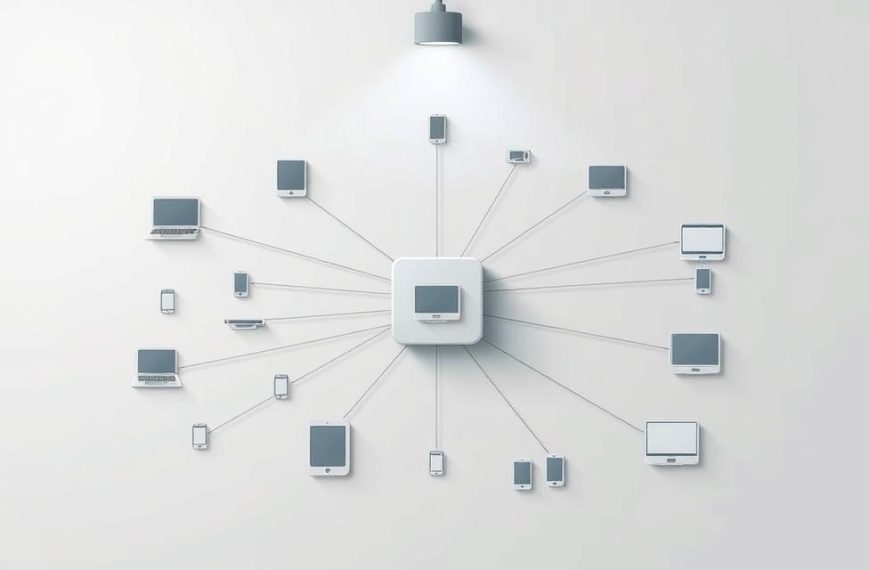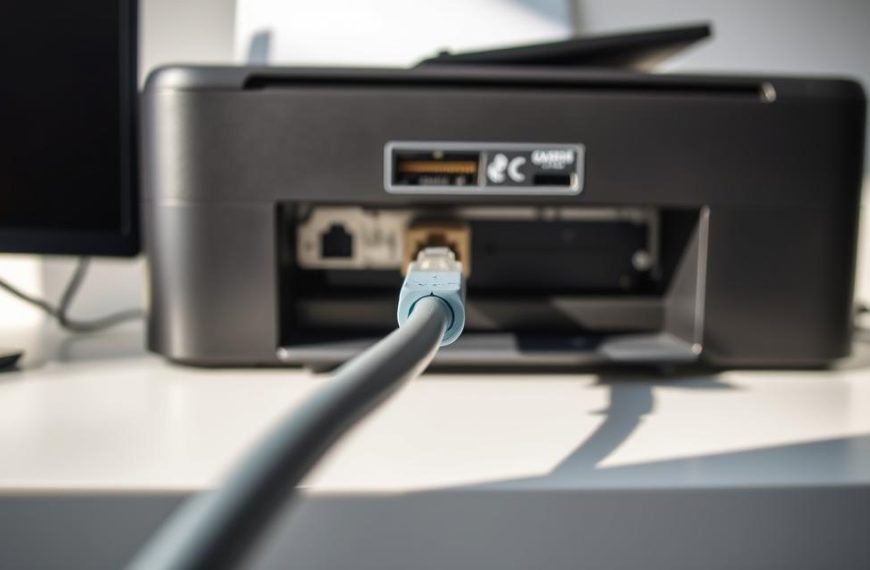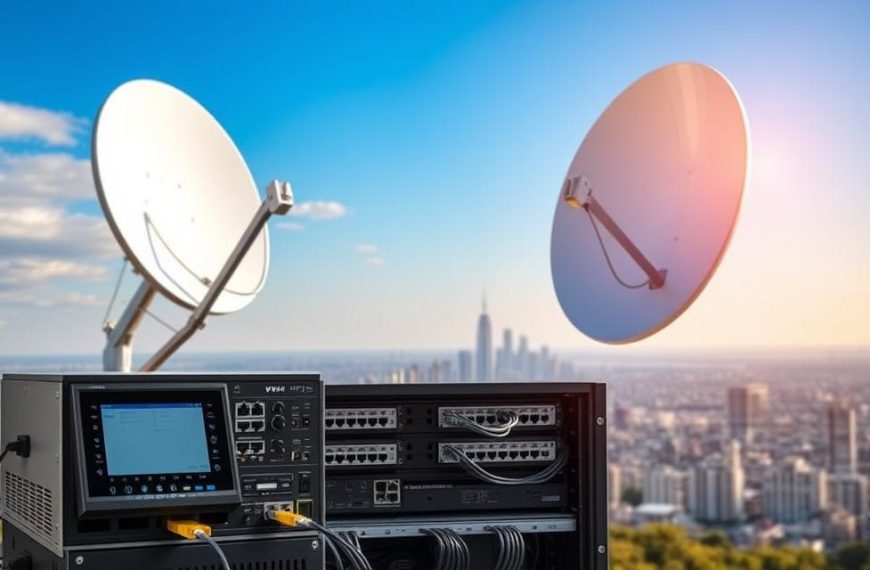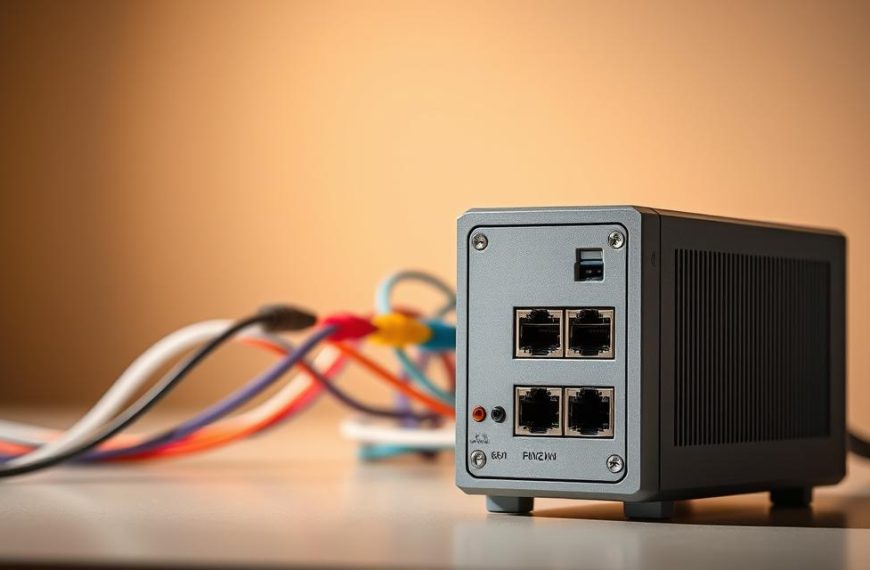At the heart of modern digital communication are key transport layer protocols. They make sure data gets to where it needs to go well and fast.
The TCP protocol and UDP protocol are two main ways to send data. They work in the transport layer of the OSI model. Each has its own role in how we communicate online.
These important protocols help move data packets between devices. They have different ways of working, which suits different needs.
Knowing about these protocols helps us understand how networks work today. This knowledge is key to making networks better and fixing problems.
Fundamentals of Network Protocols
Network protocols are like a language for digital communication. They set rules for devices to share information well. These protocols work at different levels, each with its own job in data transmission.
The Role of Transport Layer Protocols
The transport layer is key in network talks. It connects apps with the network below. It makes sure data gets to where it needs to go right and fast.
Transport protocols do a few important things:
- They help apps talk to each other directly
- They break data into packets and put them back together
- They control how much data goes through the network at once
- They find and fix errors in data
At this layer, we have TCP and UDP. TCP is about making sure data gets there safely. UDP is about getting data there fast, even if it’s not perfect.
OSI Model and Protocol Positioning
The OSI model breaks down network communication into seven layers. Each layer does a specific job and works with the ones next to it.
The transport layer is at Layer 4 of the OSI model. It’s between the network layer below and the session layer above. This spot lets it:
- Get data from apps and send it out
- Use the network layer to route packets
- Make sure data is delivered reliably to apps
- Handle many app sessions at once
Knowing about these layers helps network experts fix problems and make things better. Each network protocol focuses on its job, but they all work together well.
TCP and UDP fit into this system. They use different ways to send data transmission. Their place in the OSI model lets them meet app needs and network abilities.
What is TCP and UDP in Computer Network
At the heart of the internet are two key transport protocols. They handle data delivery in different ways. Each protocol is designed for specific needs in network communication.
TCP: Transmission Control Protocol
Transmission Control Protocol is a connection-oriented method. It sets up a reliable path between devices before sending data. This ensures data packets arrive complete and in the right order.
TCP checks for errors and sends data again if needed. It keeps talking to the sender and receiver to confirm data is delivered correctly.
UDP: User Datagram Protocol
User Datagram Protocol is connectionless. It focuses on speed, not on making sure data arrives safely. This means it doesn’t promise data will get there or in the right order.
UDP sends data without checking if it gets there. It doesn’t worry about lost packets during sending.
To see how these protocols work differently, check out our TCP vs UDP comparison. It gives you all the technical details.
TCP Protocol Characteristics and Operation
The Transmission Control Protocol ensures data gets to its destination right and in one piece. It’s different from other protocols because it focuses on setting up connections and keeping data safe.
Connection-Oriented Communication
TCP makes a formal connection before sending any data. This model creates a virtual path that stays open during the session.
The protocol keeps track of each connection with details like sequence numbers and window sizes. This helps TCP manage how data is sent and received.
Reliability Mechanisms and Flow Control
TCP’s reliability features are key. It uses sequence numbers to order data correctly at the receiving end.
Every packet sent gets an acknowledgment back to the sender. If no acknowledgment comes, TCP sends the data again.
Flow control stops the sender from sending too much data at once. The receiver tells the sender how much it can handle with window size announcements.
This keeps data transfer smooth and prevents loss. The system always checks the network and receiver’s capacity.
| Reliability Feature | Mechanism | Purpose |
|---|---|---|
| Data Sequencing | Sequence Numbers | Ensures proper data ordering |
| Error Detection | Checksums | Identifies corrupted packets |
| Loss Recovery | Retransmission Timeout | Resends lost data packets |
| Flow Management | Sliding Window | Controls data transmission rate |
Three-Way Handshake Process
The TCP handshake sets up connections in three steps. It synchronises sequence numbers and sets up communication details.
The process starts with a SYN packet from the sender. This packet has the initial sequence number and a connection request.
The receiver sends a SYN-ACK packet back, acknowledging the request and sharing its own sequence number. This bidirectional acknowledgment shows both sides are ready to talk.
The final ACK packet finishes the handshake, making the connection full-duplex. Only after this does data start to flow.
This careful setup ensures both sides agree on how to communicate before data is sent. It lays a solid base for reliable data transfer during the session.
UDP Protocol Characteristics and Operation
TCP focuses on making sure data is delivered correctly. UDP, on the other hand, is all about speed. It’s great for situations where quick delivery is more important than perfect accuracy.
Connectionless Communication Model
UDP doesn’t need to set up connections first. It starts sending data right away. This makes it faster and reduces delays.
Each piece of data is called a datagram. These packets move through networks without keeping track of each other. This fast method, though, doesn’t guarantee that all packets will arrive.
UDP doesn’t promise that packets will get to their destination. It sends data and hopes the receiver can handle it. This is good for applications that need data quickly, even if some packets are lost.
Minimal Overhead and Header Structure
UDP’s simplicity is key to its efficiency. Its header is just eight bytes long. This small size helps it use less resources.
The header has four parts:
- Source port number (16 bits)
- Destination port number (16 bits)
- Length field (16 bits)
- Checksum for basic error detection (16 bits)
This small header means less work for computers. It also uses less bandwidth than bigger headers.
UDP doesn’t have features like TCP does. It doesn’t need to keep track of packets or send confirmations. This makes it very lightweight.
| Header Field | Size (bits) | Function | Importance |
|---|---|---|---|
| Source Port | 16 | Identifies sending application | Enables response routing |
| Destination Port | 16 | Identifies receiving application | Directs packets to correct service |
| Length | 16 | Specifies datagram size | Helps reassemble data |
| Checksum | 16 | Basic error detection | Optional data integrity check |
The checksum field helps find errors in data. It’s not as strong as TCP’s, but it’s a basic check. This shows UDP’s focus on simplicity and function.
UDP is great for situations where speed is more important than perfect delivery. Its simple design means more bandwidth for data, not for managing the protocol.
Comparative Analysis: TCP vs UDP
Understanding the differences between TCP and UDP is key for good network design. These protocols have different roles in sending data. Each has its own strengths in certain situations.
Performance and Reliability Differences
TCP focuses on making sure data is delivered correctly. It uses acknowledgement packets and retransmits lost data. This ensures all data is received.
UDP, on the other hand, is faster but less reliable. It sends data without checking if it arrives. This makes it quicker but doesn’t guarantee delivery.
“Choosing between TCP and UDP is a trade-off. You can’t have both reliability and speed at the same time.”
Network managers need to think about these differences when picking protocols. TCP’s extra work ensures data is correct. UDP’s simplicity makes it faster.
Use Cases and Application Scenarios
Each protocol is better for different tasks:
- TCP is great for tasks that need data to be right: web browsing, emails, and file sharing
- UDP is best for things that need to happen fast: streaming videos, voice calls, and online games
- Some use both for different tasks at the same time
Choosing depends on what’s more important: getting data right or sending it quickly. Banks use TCP for transactions. Streaming services use UDP for live content.
Header Structure Comparison
The headers show how each protocol handles data. TCP’s header is complex, supporting many features. UDP’s header is simple and quick.
| Feature | TCP Header | UDP Header |
|---|---|---|
| Header Size | 20-60 bytes | 8 bytes fixed |
| Sequence Numbers | Present | Absent |
| Acknowledgement Field | Included | Not included |
| Flow Control | Window size field | No flow control |
| Error Checking | Checksum present | Optional checksum |
TCP’s header is bigger because it has more features. UDP’s header is small and simple. It only has what’s needed: ports, length, and checksum.
This difference affects how fast and efficient data is sent. Tasks that need careful data handling use TCP. Quick tasks use UDP.
Practical Applications and Real-World Usage
Understanding TCP and UDP is key, but seeing them in action is even more important. They are the backbone of many services we use every day. Each protocol is chosen for its strengths in different situations.
TCP in Web Browsing and Email
Transmission Control Protocol is vital for applications that need data to be perfect. It’s reliable and ensures data is delivered correctly.
When you browse the web, TCP makes sure everything loads right. This means images, text, and scripts arrive without any problems. This is why e-commerce and online banking work well.
Email also relies on TCP for guaranteed delivery. SMTP uses TCP to make sure messages get to their destination without errors. Without TCP, emails might not arrive properly.
Other important services that use TCP include:
- File transfer protocols (FTP)
- Secure shell connections (SSH)
- Database management systems
- Remote administration tools
UDP in Streaming and Gaming
User Datagram Protocol is great for situations where speed is more important than perfect reliability. It’s fast and doesn’t need to be perfect.
Video streaming services like Netflix and YouTube use UDP. It’s okay if some packets are lost because it doesn’t cause big delays. This keeps the video playing smoothly.
Online gaming also uses UDP for fast communication. Games need quick responses to win. UDP helps with this by being fast and efficient.
Voice over IP (VoIP) services like Skype and Zoom also use UDP. It helps keep calls smooth by avoiding delays.
| Application Type | Primary Protocol | Key Advantage | Example Services |
|---|---|---|---|
| Web Content Delivery | TCP | Data Integrity | HTTP/HTTPS, WordPress |
| Email Systems | TCP | Guaranteed Delivery | SMTP, IMAP, Exchange |
| Media Streaming | UDP | Low Latency | Netflix, YouTube, Spotify |
| Real-Time Gaming | UDP | Speed Priority | Call of Duty, Fortnite |
| Voice Communication | UDP | Continuous Flow | Skype, Zoom, Discord |
Both TCP and UDP work together in our digital world. They meet different needs in different ways. The choice between them depends on whether an application needs perfect accuracy or immediate delivery.
Conclusion
This summary shows the main differences between TCP and UDP. TCP is about reliable, ordered data delivery. It uses connection-oriented communication and error recovery. On the other hand, UDP is fast and connectionless. It focuses on speed, even if it means less reliability.
Choosing the right protocol depends on your needs. Use TCP for situations where data must be delivered correctly, like file transfers or web browsing. For fast, real-time services like video streaming or online gaming, UDP is better. It’s okay if some data gets lost.
In conclusion, neither TCP nor UDP is better than the other. The best choice depends on your specific needs and the network you’re working with. Knowing the differences helps in designing better networks for different applications.


















